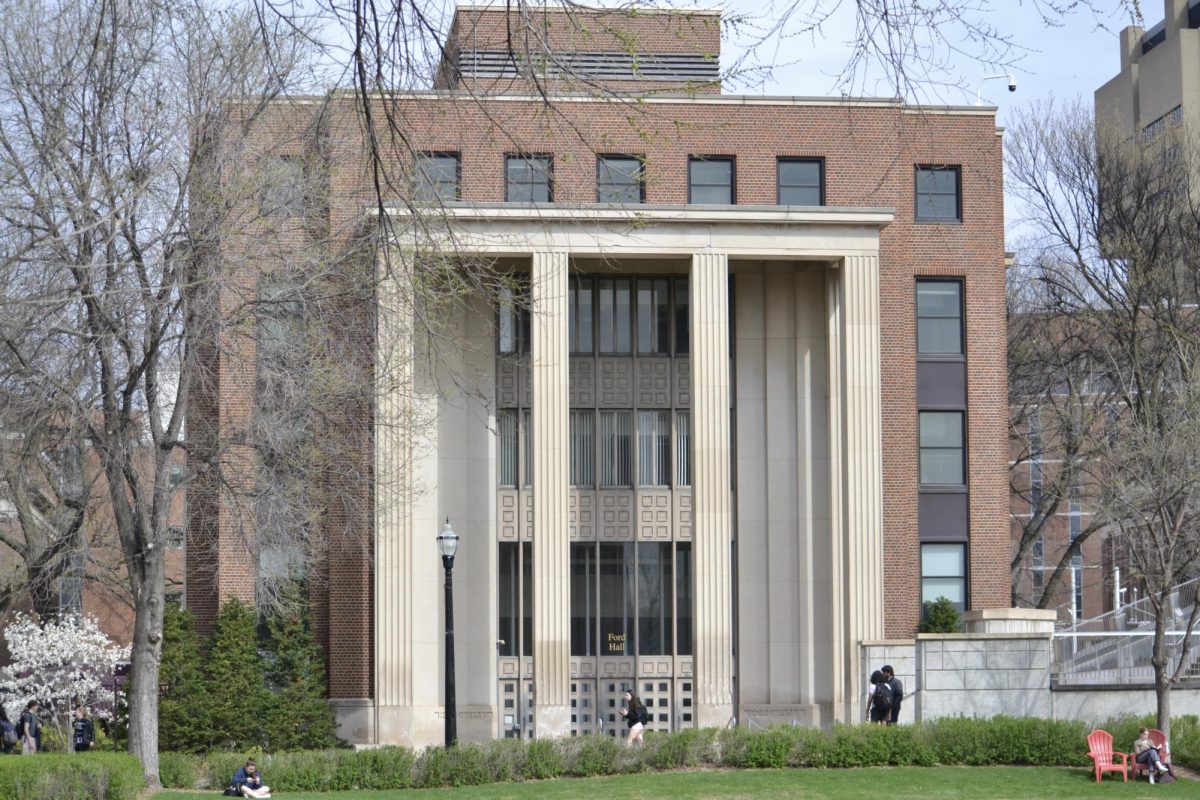Hours before the Environmental Protection Agency officially declared carbon dioxide and five other greenhouse gases threats to public health âÄî a move that could set the stage for the nationâÄôs first emissions regulations âÄî Minnesota leaders met to discuss similar topics at the state level. With $37 million of MinnesotaâÄôs federal stimulus money going toward energy efficiency projects, a panel of experts, including Sen. Amy Klobuchar, D-Minn., and University of Minnesota president Bob Bruininks , convened in a town hall-style forum in the UniversityâÄôs Carlson School of Management Friday to discuss opportunities for economic growth via ambitious renewable energy policies. The panel emphasized the feasibility of a symbiotic relationship between protecting the environment and boosting the lagging economy. The discussion focused on the potential of wind, solar and geothermal energy, as well as ethanol, biomass and carbon reduction programs. Klobuchar mentioned bills moving through Congress, including one for 25 percent renewable energy by 2025, and a carbon reduction bill that she predicted will pass through the House but not the Senate this year. âÄúI think weâÄôll get those things done,âÄù she said. âÄúEspecially with the extra push with the EPA weighing in today.âÄù J. Drake Hamilton, science policy director for private nonprofit Fresh Energy, called for implementation of President Barack ObamaâÄôs plan to auction off the right to emit carbon dioxide into the atmosphere and funnel the proceeds back to consumers. Given its cooler, northern location, panel members acknowledged the stateâÄôs wind and solar energy setbacks compared to other states, but nonetheless encouraged exploration in those fields. Louis King, president and CEO of Summit Academy OIC , a local nonprofit, said energy efficiency projects will create many new jobs. âÄúSomeone will need to physically get up there and install those solar panels,âÄù he said, adding that most âÄúgreenâÄù jobs can be done by basic carpenters. âÄúWeâÄôre taking people who had been on the sidelines, who had been laid off âÄî theyâÄôre now weatherizing our homes.âÄù Doug Cameron, chief science advisor for Piper Jaffray Investment Management, named four key aspects to ensure that government policy encourages a clean climate: government loan guarantees, putting a price on carbon dioxide, granting more funding to research universities and sensible policies regarding indirect land usage. Klobuchar expressed special confidence in the stateâÄôs biomass industry. Ethanol production will need to transition from corn to various cellulosic materials, such as switch grass and prairie grass, she said. Cameron agreed, calling corn ethanol âÄúan important start for biofuels,âÄù but predicted it will top out at 15 billion gallons produced per year in the United States. ItâÄôs currently at about 10 billion gallons, he said. Though the audience was largely Minnesota business leaders, the panel commended the enthusiasm of young people. Klobuchar recounted participating in a rally with a crowd of Minnesota college students wearing green helmets last year. Climate change used to only be a young personâÄôs issue, she said, but has since grown to include a broad range of people. âÄúPeople are starting to see the signs,âÄù she said. In the 1990s, Carlson business professor Alfred Marcus said the administration was ready to pull the plug on his business and the natural environment course due to slim enrollment. Now, the class is full with a 20-person waiting list, he said. âÄúI think thereâÄôs really a sea change going on among our students,âÄù Marcus said. âÄúItâÄôs a different kind of consciousness out there.âÄù










